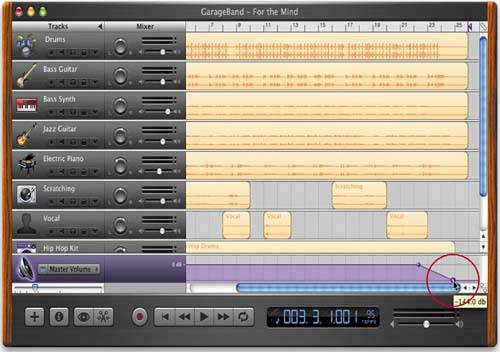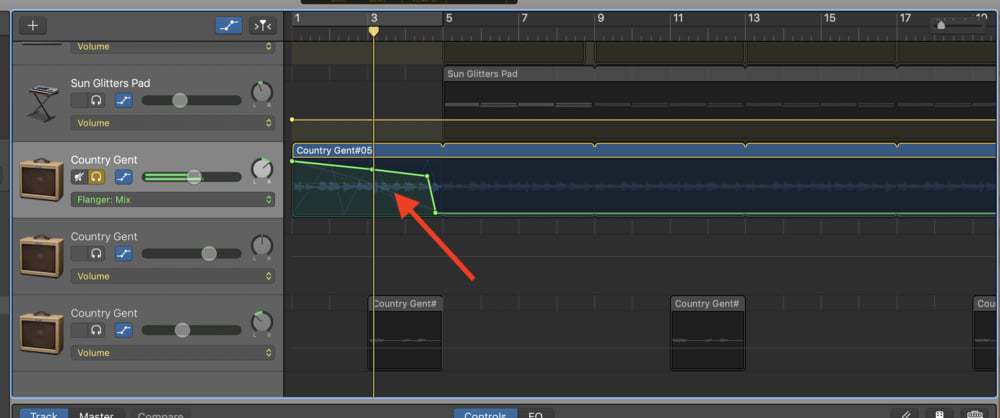
- #GARAGEBAND HOW TO FADE IN AND OUT INSTALL#
- #GARAGEBAND HOW TO FADE IN AND OUT DRIVER#
- #GARAGEBAND HOW TO FADE IN AND OUT SOFTWARE#

1) Select the track in the track list on the left.How do I gradually decrease volume in GarageBand? , by David Pogue (2004 reprinted by permission of O’Reilly Media.Psssssst : How to disable your browser's pop-up blocker safari? (Turning off Compressor for an individual track won’t make a difference.)

To solve the problem, turn off the master track’s Compressor effect. Turning on Compressor for the master track forces all tracks to play in both the left and the right channels. This problem can also occur if you’ve used the Compressor effect. Double-click on its track header, and deselect the corresponding options.

The solution, then, is to turn off the panned track’s Echo and/or Reverb effect. As a result, you’ll hear your fully panned track reverberating through both speakers, courtesy of the master echo or reverb. Instead, you’re telling GarageBand how much of the When you select these options for an individual track, you’re not really applying aĮcho or reverb to the track. The likeliest culprit is an Echo or Reverb effect that you’ve applied to that track. If you do this but still hear the darned thing coming out of both speakers, there are two possible explanations. In GarageBand, you can use the Pan knob to place a certain track’s instrument all the way to the left or right side of the stereo field. Panned Tracks Still Play in Both Speakers
#GARAGEBAND HOW TO FADE IN AND OUT INSTALL#
If you don’t see it listed, you may need to install the appropriate driver-this usually comes with the speakers or audio box.
#GARAGEBAND HOW TO FADE IN AND OUT DRIVER#
Click on the Audio Input Driver pop-up menu to select the name of your external speakers or interface box. Open GarageBand’s Audio/MIDI preferences. But what if you’ve bought fancy USB speakers? Or what if you’ve connected an audio interface box that’s hooked up to its own sound system? In those cases, you’ll need to adjust your audio options. Ordinarily, GarageBand plays back sounds through your Mac’s audio circuitry-either through your Mac’s built-in speakers or through speakers connected to its headphone jack. If you or somebody else has been doing some naughty playing in the Library: Application Support: GarageBand folder, the files may be so dismantled that you need to reinstall GarageBand to get it going again. Double-click on a track header to see if anything is in the list.
#GARAGEBAND HOW TO FADE IN AND OUT SOFTWARE#
(It’s possible to fiddle with the effects so much that no sound emerges.)įinally, check whether you, in fact, have any Software Instruments available.

In the Details panel, try turning off your effects one by one until you find the problem. You should have an instrument and effects preset active in the top two lists. You might also try double-clicking on the track header to open the Track Info dialog box. Click on a few keys to ensure that the selected track has a working instrument selected. If you still encounter the problem, go to Window: Keyboard to open the on-screen keyboard. Also check that you haven’t muted this track or soloed another one. In that case, make sure that you’ve selected a green Software Instrument track. Flicker on and off, then everything is correctly hooked up.


 0 kommentar(er)
0 kommentar(er)
